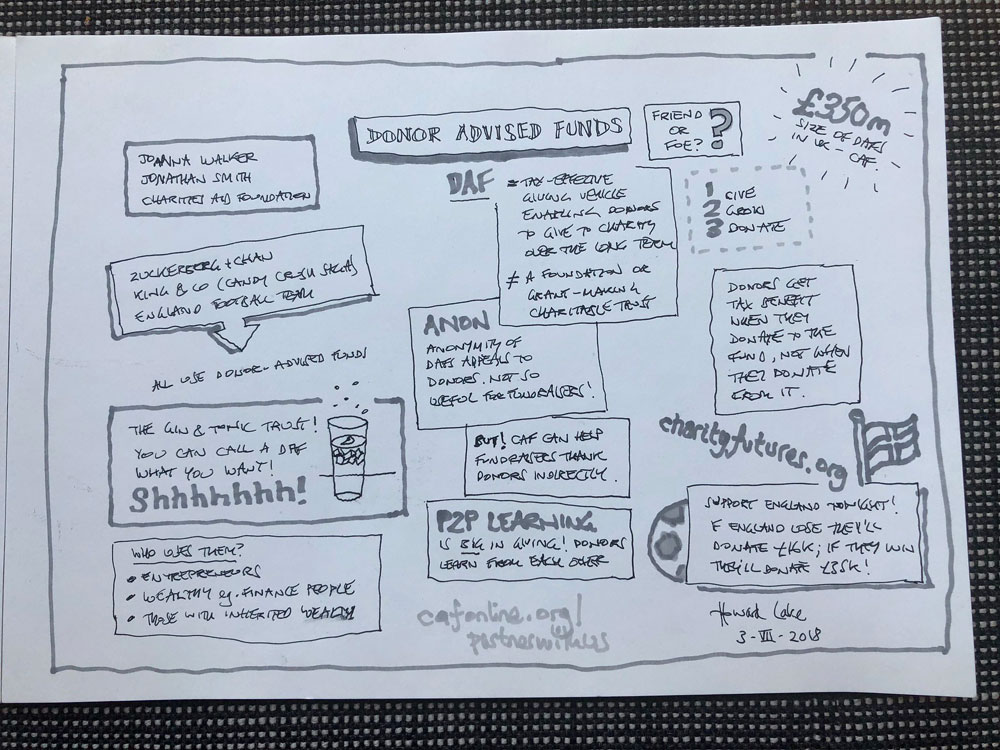
December 18, 2019; Vox, “Recode”
If you wanted an ironclad rationale for why donor-advised funds need external regulation, you need look no further than Google cofounder Larry Page.
Page, worth $65.1 billion, has been making yearly mega-gifts to his own foundation, receiving tax breaks for his largesse. But when it comes to paying out the five percent in grants the laws require, no deal. Instead, Page has been playing a shell game by sending the money the foundation is required to spend on charity to intermediaries where it can linger indefinitely—donor-advised funds hosted by the National Philanthropic Trust (which received $100 million in 2017) and Schwab Charitable (which received $80 million in the same year). Page also parks dollars at Vanguard Charitable; between the three, Page controls at least $750 million in donor-advised funds that should already have been spent out. In this way Page avoids any sort of public accountability for the use of the funds that taxpayers have subsidized.
The fact is that in doing this, Page is making an excellent case for the regulation of donor-advised funds, including minimum payout and transparency requirements, because there could not be a clearer, more flagrant, or more cynical violation of the spirit of the requirement that foundations spend at least five percent of their assets on charitable contributions each year.
In 2017, the foundation paid a pittance directly to charity.
The Carl Victor Page Memorial Foundation needs to make big donations to DAFs because it doesn’t give much to traditional charity. For instance, in 2017, the last year with available tax records, the foundation gave $1,000 to the American Cancer Society, nearly $100,000 to New Venture Fund, a group that backs left-of-center causes, and gave almost $800,000 to offer free flu shots to students in Oakland. Together, those three donations—the only ones not to a DAF in 2017—would obviously not meet the five percent threshold for a foundation boasting a $3 billion endowment.
Sign up for our free newsletters
Subscribe to NPQ's newsletters to have our top stories delivered directly to your inbox.
By signing up, you agree to our privacy policy and terms of use, and to receive messages from NPQ and our partners.
Meanwhile, 99.5 percent of the money paid out went to donor-advised funds where he controls the grantmaking. From that point on, because there is no transparency for even the largest of individual DAFs, there is no way of monitoring when and how much is disbursed.
NPQ reported in January on Elon Musk’s use of the same strategy to maintain control of money already committed to charity—presumably for the later indulgence of a personal project organized within a charity shell.
One person close to many Silicon Valley billionaires said that there’s growing guilt among employees at family offices that use their foundations to dispense to DAFs and avoid real charitable giving. Privately, they say something must be done.
Reflective of its level of real charitable activity, the Page Memorial Foundation has no website and no staff listing, thus cutting it off from public access. Perhaps it makes no sense to get one’s hopes up. “You know, if I were to get hit by a bus today,” Page quipped at one point, “I should leave all of it to Elon Musk.”
The foundation’s 990 shows that Page spends an average of just 15 minutes a week on foundation work. Is this really how we want to spend tax dollars? —Ruth McCambridge













